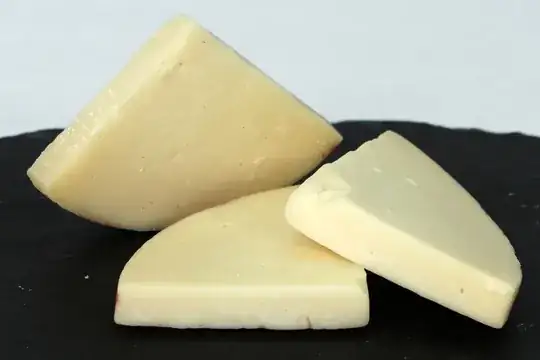I've made several cheeses at home following a cheddar recipe. After I've aged the cheeses and cut them open, I'm usually finding that the cheese has a somewhat spongy, open texture with small visible holes in it, similar to provolone:

This is in place of the denser, solid texture that I expect from cheddar:

The taste of the cheese is quite good, but I can't figure out why the texture isn't turning out as expected. What am I doing wrong?